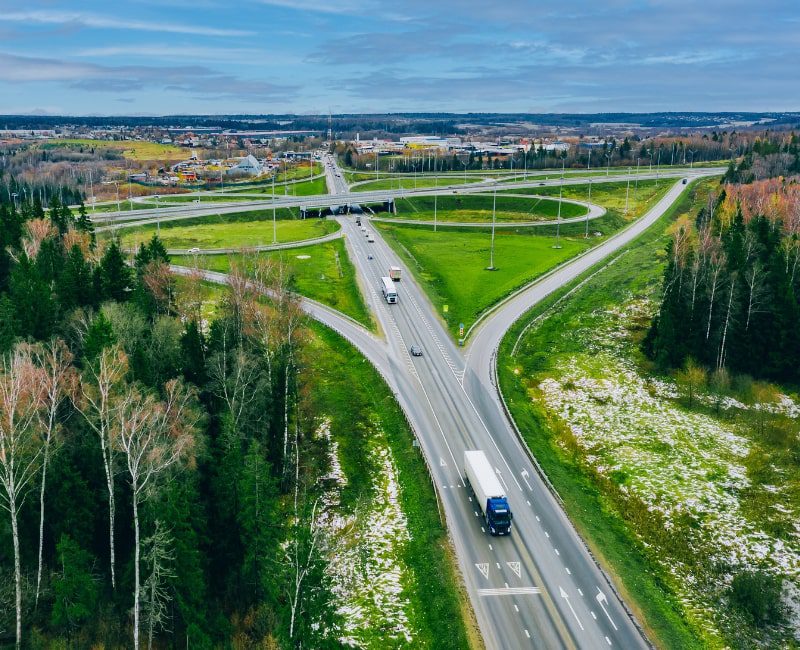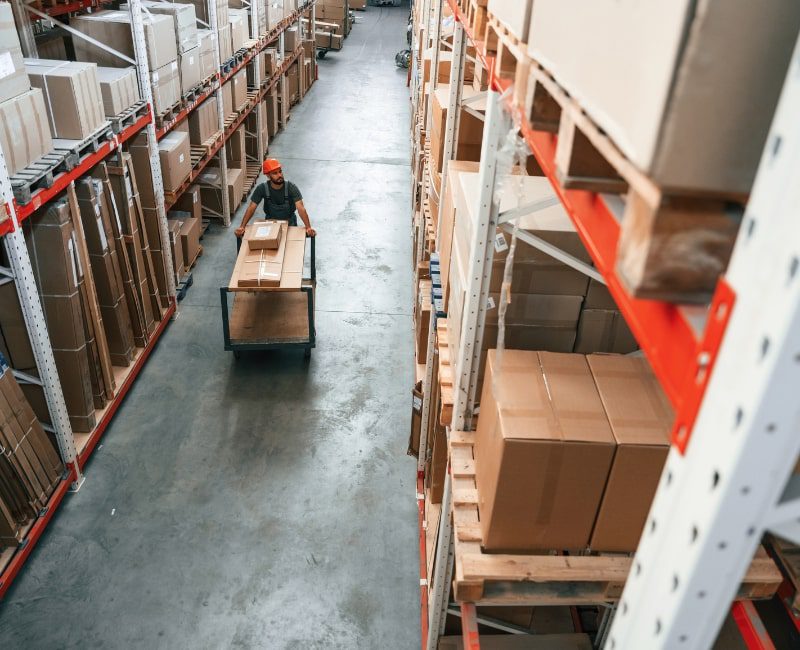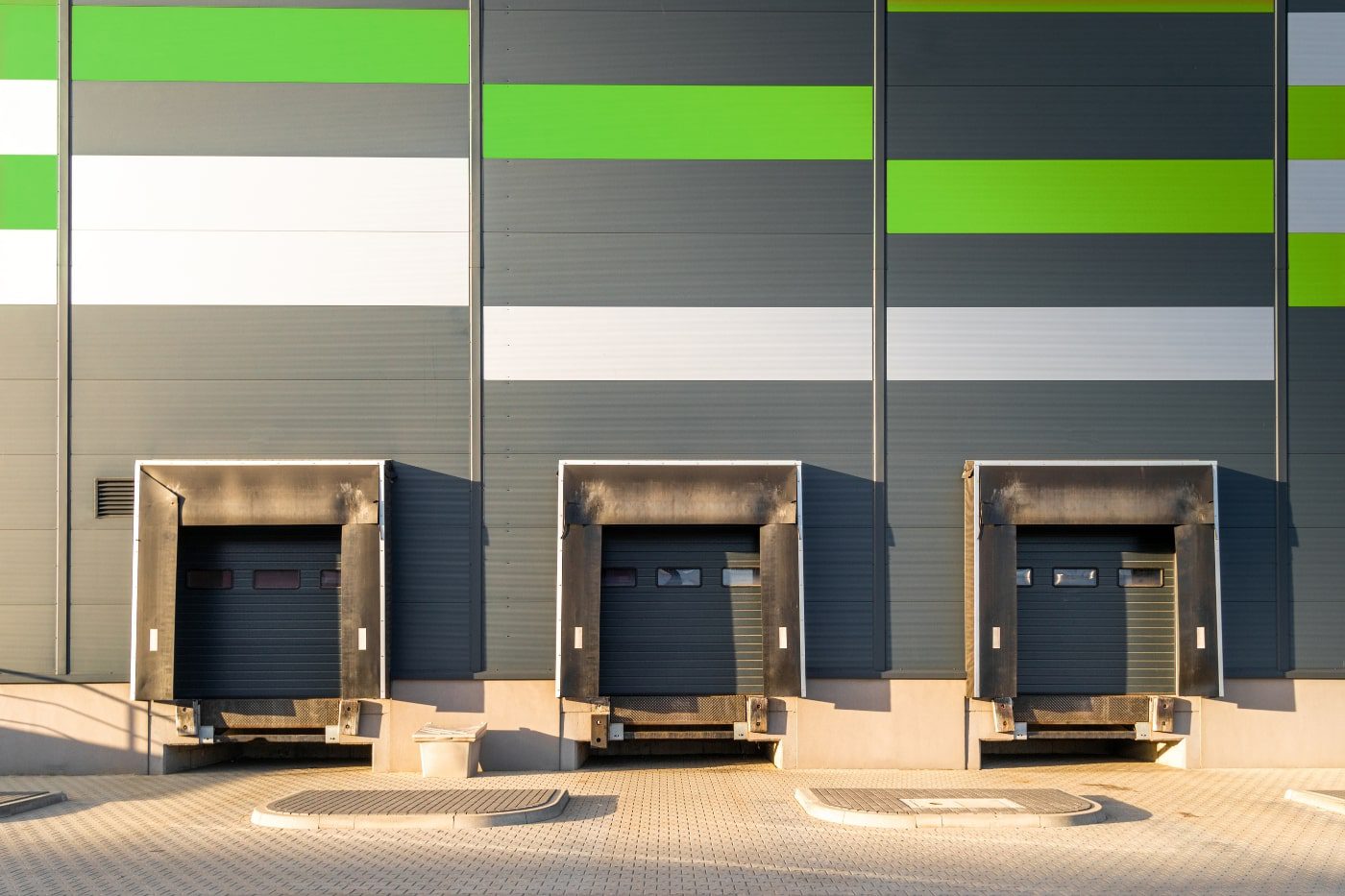Tired of green initiatives that sound good on paper but wreck your delivery schedules and bottom line? You’re not alone. Many companies struggle to balance the need for sustainable practices with the demands of efficient and cost-effective logistics.
Going green shouldn’t mean sacrificing speed, reliability, or profits. It’s a tough balancing act, but it’s possible to make your logistics operations more environmentally friendly without compromising the efficiency you need to stay competitive. In this article, we’ll be exploring practical strategies to help you do just that.
Route Optimization and Fuel Efficiency for Sustainable Logistics
Let’s face it, fuel is a major expense in logistics, and it’s also a significant contributor to greenhouse gas emissions. But what if you could reduce your fuel consumption and improve your delivery times? That’s where smart route planning and fuel-efficient vehicles come in.

Optimizing Routes for Reduced Fuel Consumption
One of the simplest ways to cut down on fuel use is to make sure your trucks are taking the most efficient routes. This isn’t just about finding the shortest distance; it’s about considering factors like traffic, road conditions, and delivery schedules.
- Leveraging route planning software can help you map out the best routes, taking into account real-time traffic updates and potential delays. This not only saves fuel but also helps ensure timely deliveries.
- Implementing dynamic routing takes things a step further by adjusting routes on the fly based on changing conditions. For example, if your driver encounters an unexpected road closure, dynamic routing can quickly recalculate the route to avoid delays and wasted fuel.
- Load consolidation and full truckload strategies are also key. By maximizing the use of your truck space, you can reduce the number of trips needed, which translates to less fuel burned and lower emissions.
Investing in Fuel-Efficient Vehicles and Technologies
While optimizing routes is crucial, the vehicles play a huge role in fuel efficiency.
- Exploring alternative fuel options like biodiesel or even electric vehicles can significantly reduce your carbon footprint. Electric trucks are becoming increasingly viable for certain applications, especially for shorter routes and urban deliveries.
- Adopting fuel-saving technologies can make a big difference. Think aerodynamic trailers that reduce drag, tire pressure monitoring systems to ensure optimal tire inflation and even engine optimization software that helps drivers operate vehicles more efficiently.
- Implementing driver training programs focused on fuel-efficient driving techniques can also have a significant impact. Teaching drivers techniques like smooth acceleration and braking, and minimizing idling time, can lead to substantial fuel savings over time.
Warehouse Efficiency and Waste Reduction for Logistics Sustainability
Your warehouse is the heart of your logistics operation. It’s where goods are received, stored, and prepared for shipment. But did you know that your warehouse can also be a major source of waste and energy consumption? By implementing some key strategies, you can make your warehouse a greener, more sustainable part of your business.

Greening Your Warehouse Operations
Making your warehouse more eco-friendly doesn’t have to involve a complete overhaul. Often, it’s about making smarter choices and optimizing existing processes.
- Optimizing your warehouse layout is a great place to start. By designing a layout that allows for the efficient movement of goods, you can minimize unnecessary handling and reduce the use of forklifts and other equipment. This not only saves energy but also improves productivity.
- Investing in energy-efficient lighting and HVAC systems can make a significant dent in your energy bills. Switching to LED lighting and upgrading to more efficient heating and cooling systems can have a big impact on your environmental footprint. The Energy Group found that installing energy-efficient lighting can reduce costs associated with lighting and cooling by up to 75%!
- Implementing waste reduction and recycling programs is crucial. This includes everything from reducing packaging waste to properly recycling cardboard, plastics, and other materials. Consider partnering with local recycling companies to ensure your waste is handled responsibly.
Sustainable Packaging and Handling
The packaging you use and how you handle goods can also contribute to your environmental impact.
- Utilizing eco-friendly packaging materials is a simple but effective way to reduce waste. Look for materials made from recycled content or biodegradable options. Switching to paper-based packing materials instead of plastic can also make a difference.
- Optimizing packaging size is another important step. By using the right-sized boxes and minimizing unnecessary packaging, you can reduce waste and even save on shipping costs.
- Exploring reusable packaging systems can be a game-changer. This involves using durable containers that can be used multiple times, reducing the need for disposable packaging. While this might require an initial investment, it can lead to significant long-term cost savings and environmental benefits.
Technology and Collaboration for Greener Logistics
Technology is essential for efficient logistics – but it can also be a powerful tool for sustainability! From optimizing routes to reducing waste, technology can help you make your logistics operations greener and more efficient.
Technology’s Role in Sustainability
Technology offers a range of solutions to help you reduce your environmental impact.
- Utilizing transportation management systems (TMS) can provide better visibility and control over your entire logistics operation. A good TMS can help you optimize routes, track shipments in real-time, and identify areas where you can improve efficiency and reduce waste.
- Implementing real-time tracking and monitoring goes hand-in-hand with a TMS. By knowing exactly where your trucks are and what they’re carrying, you can reduce empty miles, improve delivery accuracy, and minimize unnecessary fuel consumption.
Collaboration for a Sustainable Supply Chain
Sustainability isn’t a solo effort; it requires collaboration and communication across your entire supply chain.
- Partnering with suppliers and customers who share your sustainability goals is essential. By working together, you can identify opportunities to reduce waste, improve efficiency, and promote environmentally friendly practices throughout the supply chain.
- Participating in collaborative transportation networks can help optimize resource utilization. These networks allow companies to share transportation resources and reduce empty miles by coordinating shipments and maximizing truckloads. This not only benefits the environment but can also lead to cost savings for all parties involved.
Driving Towards a Greener Future
Making your logistics operations greener doesn’t have to be a trade-off. As we’ve seen, there are plenty of strategies you can implement to reduce your environmental impact without sacrificing efficiency. From optimizing routes to greening your warehouse and collaborating with partners, the possibilities are endless.
Sustainability isn’t just good for the planet; it’s good for business. By embracing sustainable practices, you can reduce costs, enhance your brand reputation, and gain a competitive advantage.
As a third-party logistics company based in Indiana, we’re dedicated to helping businesses implement these sustainable strategies and build more environmentally responsible supply chains. We believe that by working together, we can create a greener future for the logistics industry and the planet.



